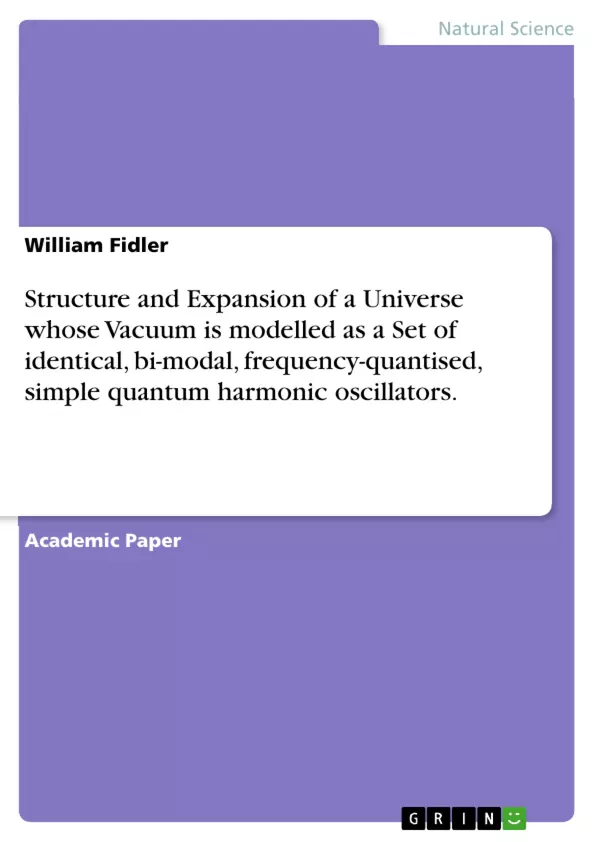The ‘fabric’ of the model presented here consists of identical, contiguous cubes of space, each of which is occupied by a simple quantum harmonic oscillator. A possible structure is proposed for the ensemble of cubes, and it is shown also that other configurations, on all scales can exist in the ensemble, even although the members of that collection are absolutely identical.
The expansion of space is considered initially from the standpoint of a universe which is not accelerating, and equations are developed which relate to this ‘coasting’ condition, and, in which the Hubble parameter, H, is shown to be a function of time. These equations are extended by the inclusion of the deceleration parameter of cosmology, q, treating q as a parameter.
Inhaltsverzeichnis (Table of Contents)
- Abstract
- Introduction
- A stacking structure for the universe
- The expansion of space
- The cosmic jerk
- The Hubble parameter
- The expansion of space relative to an observer
- Discussion
- References
Zielsetzung und Themenschwerpunkte (Objectives and Key Themes)
This work aims to propose a model for the structure and expansion of the universe based on a collection of identical, frequency-quantized, simple quantum harmonic oscillators. The model, using a “coasting” condition, develops equations relating to the expansion of space and shows the Hubble parameter to be a function of time.
- A model for the structure and expansion of the universe
- The role of quantum harmonic oscillators in space
- The Hubble parameter as a function of time
- The impact of the cosmic jerk on the expansion of space
- The relationship between the Hubble parameter and the volumetric strain rate of space
Zusammenfassung der Kapitel (Chapter Summaries)
- Abstract: Presents a concise overview of the model and its key findings, including the structure of space, the expansion of space, and the cosmic jerk.
- Introduction: Discusses the prevailing view of the universe's shape and size and the significance of the Hubble parameter.
- A stacking structure for the universe: Describes the model of the universe as a set of identical cubes, each occupied by a simple quantum harmonic oscillator. The importance of isotropy is explored, and the concept of different colors representing directions of oscillation is introduced.
Schlüsselwörter (Keywords)
The main keywords and focus topics of this text include: quantum harmonic oscillators, Hubble's parameter, cosmic jerk, deceleration parameter, expansion of space, volumetric strain rate, isotropy, and the structure of the universe.
- Citar trabajo
- William Fidler (Autor), 2018, Structure and Expansion of a Universe whose Vacuum is modelled as a Set of identical, bi-modal, frequency-quantised, simple quantum harmonic oscillators., Múnich, GRIN Verlag, https://www.grin.com/document/416773



